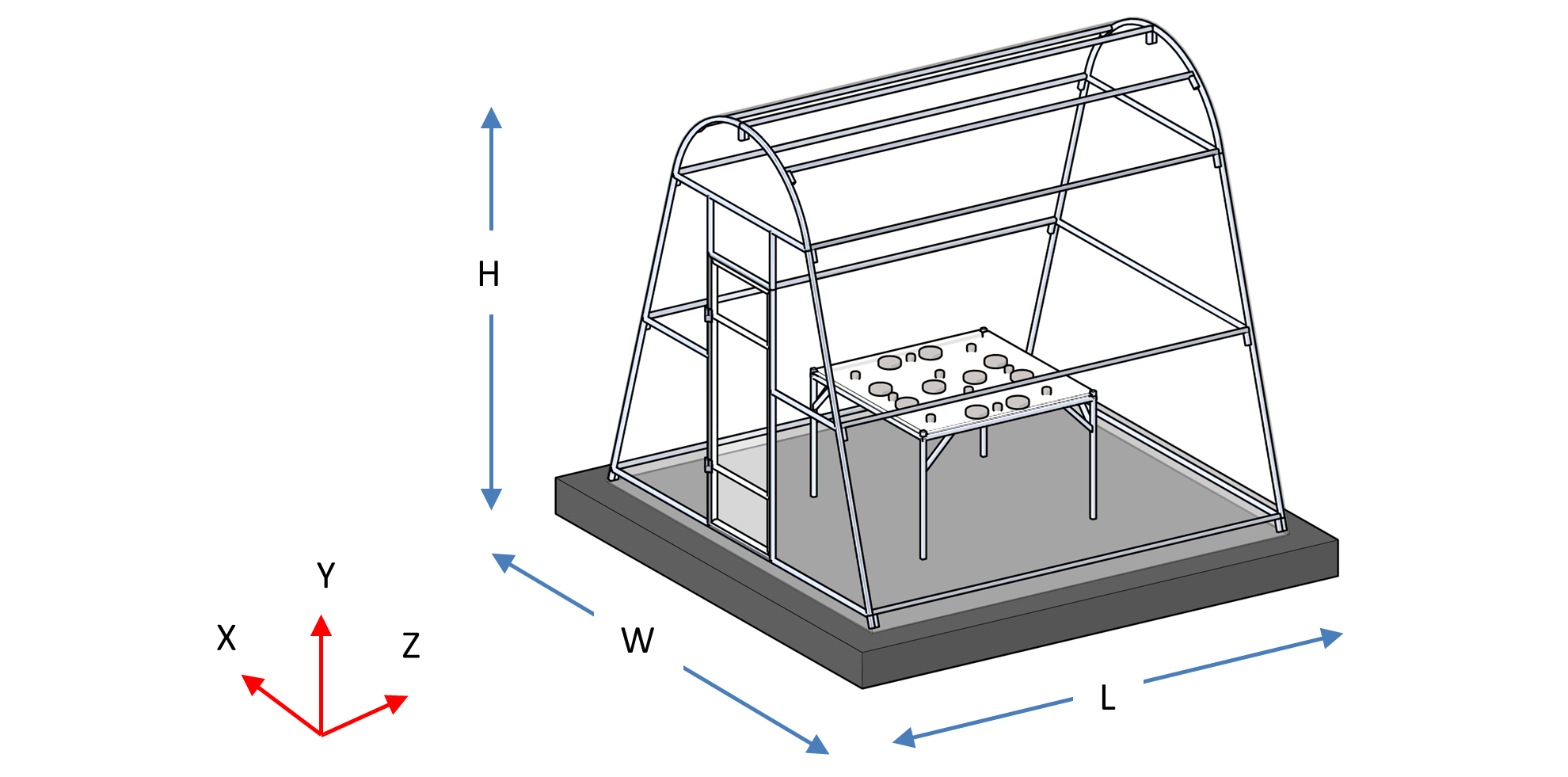Development of an agricultural multi-zone solar dryer with airflow management using CFD and genetic algorithm
Main Article Content
Abstract
This research focuses on the development of an agricultural drying house with multi-zone airflow management using Computational Fluid Dynamics (CFD) combined with Genetic Algorithm (GA) to enhance drying efficiency. The experiment compared the results of a conventional drying house with the improved version by analyzing drying time, energy consumption, average product moisture content, and drying uniformity. The results demonstrated that the drying house utilizing CFD and GA techniques reduced drying time by an average of 30.0 ± 2.6%, decreased energy consumption by 25.0 ± 2.0%, reduced the average product moisture content from 15.5 ± 1.0% to 10.5 ± 0.6%, and increased drying uniformity from 70.0 ± 3.5% to 90.1 ± 2.4%, all with statistical significance. These findings reflect the capability of CFD and GA technologies to improve efficiency, reduce production costs, and enhance the quality of products sustainably. This technology holds significant potential for advancing drying processes in agriculture and the food industry in the future.
Article Details

This work is licensed under a Creative Commons Attribution-NonCommercial-NoDerivatives 4.0 International License.
References
Mujumdar AS [editor]. Handbook of industrial drying. 3rd ed. Boca Raton, Florida, United States: CRC Press; 2006. https://doi.org/10.1201/9781420017618.
Mujumdar AS [editor]. Principles, classification, and selection of dryers; Handbook of industrial drying. 3rd ed. Boca Raton, Florida, United States: CRC Press; 2006. https://doi.org/10.1201/9781420017618-11.
Zion market research. Agricultural dryer market size, share, growth report, 2030 [Internet]. 2022 [cited 2025 Jan 07]. Available from: https://www.zionmarketresearch.com/report/agricultural-dryer-market.
FAO. In brief to the state of food and agriculture 2024 [Internet]. 2024 [cited 2024 Nov 15]. Available from: https://openknowledge.fao.org/items/d287ef86-214b-4f25-a635-98c8f2751035.
FAO. The state of food and agriculture 2023 [Internet]. 2023 [cited 2024 Nov 15]. Available from: https://openknowledge.fao.org/items/1516eb79-8b43-400e-b3cb-130fd70853b0.
Dincer I, Sahin AZ. A new model for thermodynamic analysis of a drying process. Int J Heat Mass Transf. 2004;47(4);645-652. https://doi.org/10.1016/j.ijheatmasstransfer.2003.08.013.
Ajuebor F, Aworanti OA, Agbede OO, Agarry SE, Afolabi TJ, Ogunleye OO. Drying process optimization and modelling the drying kinetics and quality attributes of dried chili pepper (Capsicum frutescens L.). Trends in Sciences. 2022;19(17):5752. https://doi.org/10.48048/tis.2022.5752.
Catalkaya M, Akay O, Daş M, Akpinar EK. Application of experimental, numerical, and machine learning methods to improve drying performance and decrease energy consumption of tunnel-type food dryer. Drying Technology. 2023:1-20. https://doi.org/10.1080/07373937.2023.2216781.
Zhu L, Xie Y, Li M, Zhang X, Zhang X, Zhu H, Gu J, Zhang Q, Yang X. Design and optimization of heat pump with infrared drying for Glycyrrhiza uralensis (Licorice) processing. Frontiers in Nutrition. 2024;11:1-14. https://doi.org/10.3389/fnut.2024.1382296.
Babu AK, Kumaresan G, Raj VAA, Velraj R. Review of leaf drying: Mechanism and influencing parameters, drying methods, nutrient preservation, and mathematical models. Renewable and Sustainable Energy Reviews. 2018;90:536-556. https://doi.org/10.1016/j.rser.2018.04.002.


